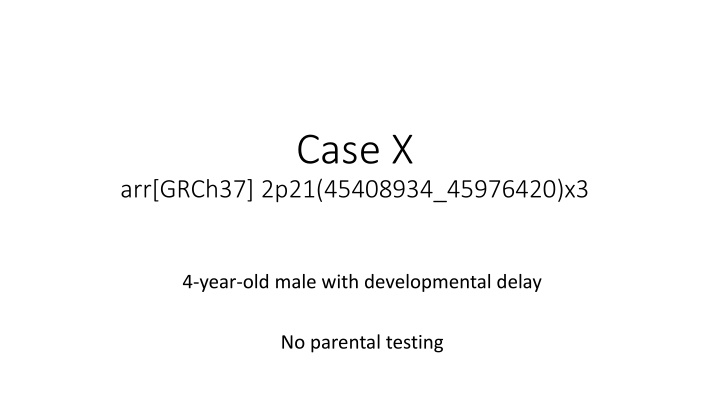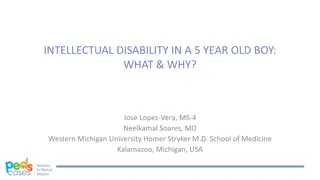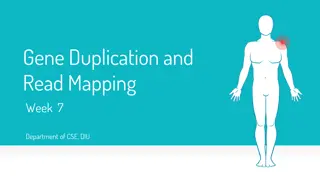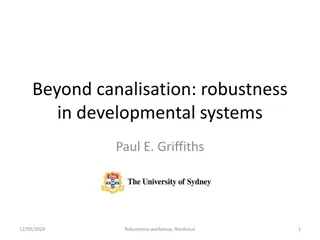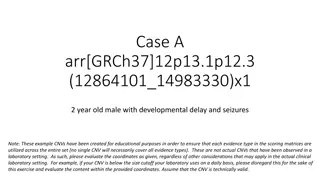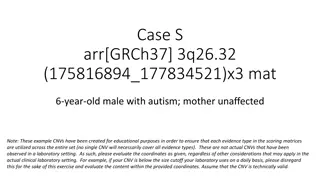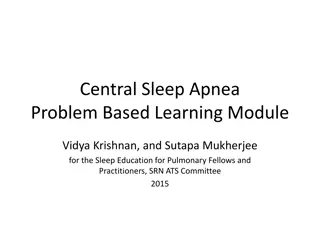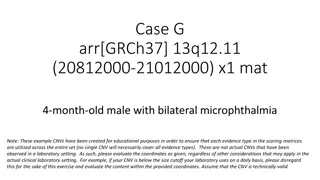Case Study: 2p21 Duplication in a 4-Year-Old Male with Developmental Delay
This case study involves a 4-year-old male with developmental delay and a duplication in the 2p21 region. The genetic analysis indicates no parental testing has been done, and the duplication has been reported as LP/VUS (Likely Pathogenic / Variant of Uncertain Significance). Predicted genes and internal data from the laboratory suggest variations in phenotypes and indications. The duplication frequency is discussed in comparison to controls, and the presence of CNVs in the general population is highlighted. References and track information are provided for further context.
Download Presentation

Please find below an Image/Link to download the presentation.
The content on the website is provided AS IS for your information and personal use only. It may not be sold, licensed, or shared on other websites without obtaining consent from the author.If you encounter any issues during the download, it is possible that the publisher has removed the file from their server.
You are allowed to download the files provided on this website for personal or commercial use, subject to the condition that they are used lawfully. All files are the property of their respective owners.
The content on the website is provided AS IS for your information and personal use only. It may not be sold, licensed, or shared on other websites without obtaining consent from the author.
E N D
Presentation Transcript
Case X arr[GRCh37] 2p21(45408934_45976420)x3 4-year-old male with developmental delay No parental testing
ncRNA Protein Coding? mRNA mRNA
Established? N N N 0
Example: arr[GRCh37] 2p21(45408934_45976420)x3 chr2:45408934-45976420 https://dosage.clinicalgenome.org/index.shtml
* * *Predicted genes
Your Laboratorys Internal Data Numerous dups of this region, phenotypes/indications vary widely LP/VUS, reported 2011 2020 LB/B, not reported RefSeq Curated Genes
NOTE: Coordinates are in hg18 Cooper, Coe, Girirajan et al., Nat Genet. 2011
Cases (n=29,085) Controls (n=19,584) Track info: nstd54 and nstd100 datasets, from Cooper et al., 2011; Coe et al., 2014
2p21 Duplication Frequency (Coe et al., 2014) 15/29,085 cases 9/19,584 controls p=0.3783 LR+: 1.26 (0.554 to 2.95) CNVs that are not enriched are observed at similar (or higher) frequencies in controls compared to cases, may be deducted points, particularly when such CNVs are also relatively common (e.g. >0.1% frequency, -0.90 points, category 4N).
Frequency 0.08% In general, for the purposes of clinical CNV evaluation, a CNV may be considered common in the general population if it is present at a frequency of 1% or greater in the DGV Gold Standard dataset (or other high confidence dataset); variation observed at this frequency in the general population may receive the default number of points for this category, -1 points. Consider assigning less weight if a variant is observed in the general population, but at a frequency lower than 1%.
NOTE: Use caution with public databases! CNVs from ClinVar:
NOTE: Use caution with public databases! CNVs from ClinVar:
If the reported phenotype is either NOT consistent with what is expected for a given gene/genomic variant, or simply not consistent in general, clinical judgement should be used to determine if this should result in 0 added points to the evaluation, or negative point values (i.e., evidence against a role in pathogenicity). Negative point values could be considered with increasing evidence of inconsistency.
Classification: Benign Section Evidence Score Notes 1 2 Protein-coding gene(s)? Overlap with established TS (or HI) gene? Gene count: 0-24 genes Individual case evidence- phenotype inconsistent 0 0 0 Yes No 2 protein-coding genes Numerous instances in our internal database with varied indications Not enriched, present in multiple control datasets 3A 4D -0.3 4L-O Case-control, population evidence -0.9 5 Inheritance information unavailable Total points 0 < -1.0
